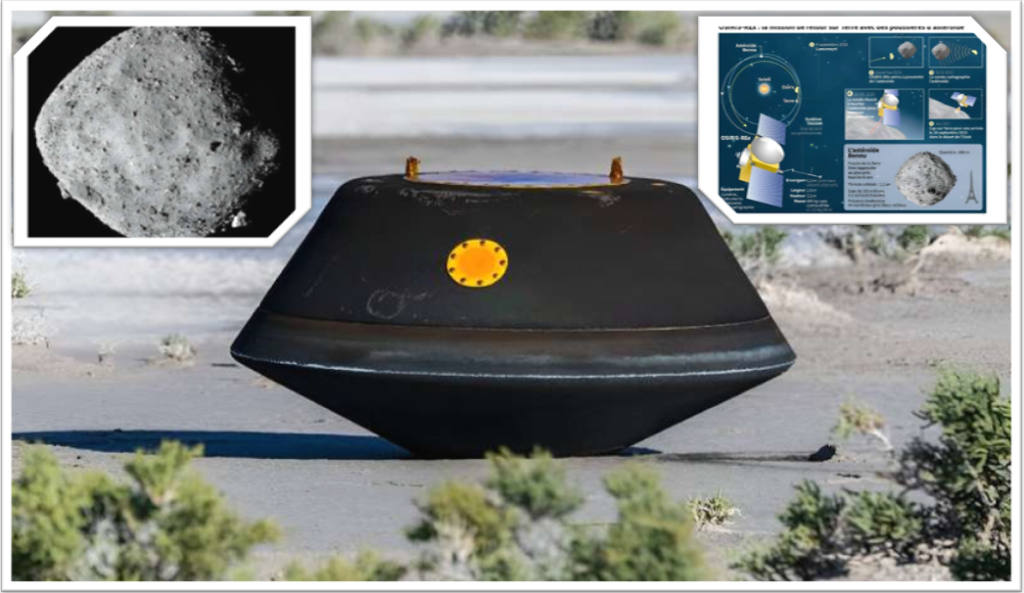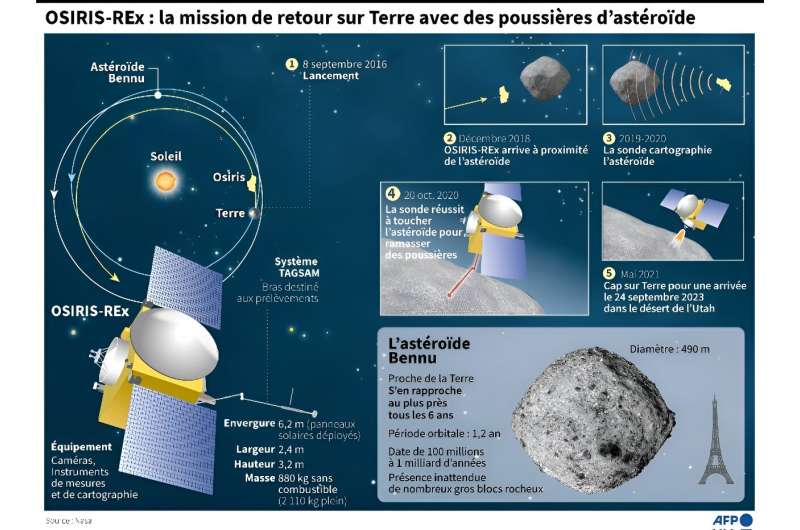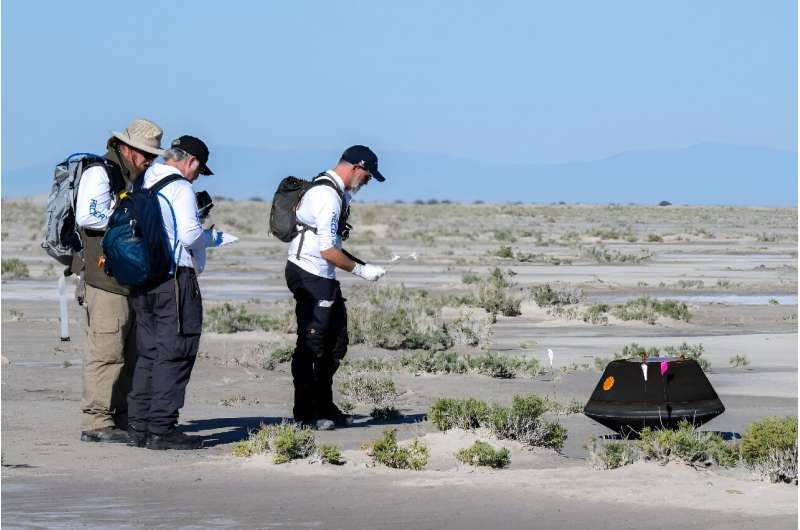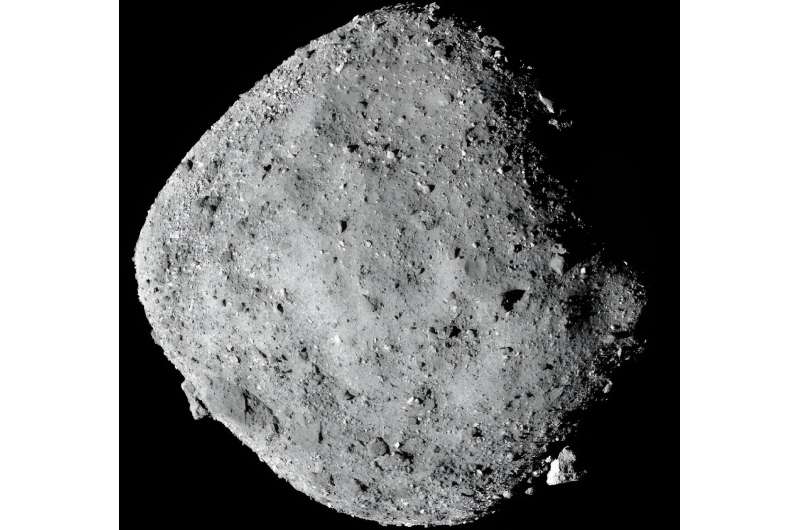A seven-year space journey ended on Sunday when a NASA capsule landed in the desert of the US state of Utah, bringing back to Earth the largest asteroid samples ever collected.

Scientists have high hopes for the sample, saying it will provide insight into the formation of our solar system and how Earth became habitable.
When they learned that the ship’s main parachute had deployed, “I literally burst into tears,” Dante Lauretta, principal investigator on the Osiris-Rex mission, said at a news conference.
“That’s when I knew I was home. For me, real science is just beginning. »
The 3.86 billion mile (6.21 billion km) journey marks the first US sample return mission of its kind, the US space agency said in an article on X, before This is Twitter.
NASA Administrator Bill Nelson praised the mission and said the asteroid dust “will give scientists extraordinary insight into the beginnings of our solar system.”

The final fiery landing of the Osiris-Rex probe into Earth’s atmosphere was dangerous, but NASA managed a smooth landing at 8:52 a.m. local time (2:52 p.m. GMT) ) in the field at the Utah Military Training and Test Center.
Four years after its launch in 2016, the probe landed on the asteroid Bennu and collected what NASA estimates was about 9 ounces (250 grams) of dust on its rocky surface.
Even this small amount, according to NASA, will “help us better understand the types of asteroids that could threaten Earth.”
The return of the sample is “truly historic”, NASA scientist Amy Simon told AFP.“This will be the largest sample we have brought back since the Apollo moon rocks” were brought back to Earth.
.
Osiris-Rex released the capsule early Sunday morning at an altitude of more than 67,000 miles.

The fiery passage through the atmosphere took place only in the final 13 minutes, as the ship descended at more than 27,000 miles per hour, with temperatures reaching 5,000 degrees F (2,760 degrees C). , NASA images show the tire-sized capsule on the ground in the desert, with scientists approaching the device and taking measurements.
Ultimately, they concluded that the capsule had not ruptured, meaning its essential seal remained intact, preventing any contamination of the sample by desert sand.
The team then transported the capsule by helicopter to a nearby “clean room”.
Meanwhile, the spaceflight probe started its engines and moved away from Earth, NASA said, “on its way” to rendezvous with another asteroid.
Japanese Model
On Monday, the sample will arrive at the Johnson Space Center in Houston for further study, and NASA plans to announce initial results at a press conference on October 11.
About one part Samples will be used immediately in experiments and small amounts will be sent to Japanese and Canadian missionary partners.
But much of it will be preserved for future generations – a “treasure trove of scientific analysis for years to come, for our children and grandchildren and those not even born yet”, says Lori Glaze, director of NASA’s Planetary Science Division, said.

Japan previously donated some grain from asteroid Ryugu to NASA, after returning 0.2 ounces of dust to Earth in 2020 during the Hayabusa-2 mission. Ten years ago, it brought back a tiny amount from another asteroid.
But Bennu’s sample is much larger, allowing for more testing, Simon said.
The story of Earth’s origin
The asteroid is made of primordial solar system materials, about 4 years old.5 billion years and still relatively intact. “They could give us clues about how the solar system formed and evolved,” said Melissa Morris, head of the Osiris-Rex program.
“It is the story of our own origins.”
By hitting Earth’s surface, “we think asteroids and comets provided organic matter, possibly water, that helped life develop on Earth,” Simon said.
Scientists believe that Bennu, about 500 meters (1,640 feet) in diameter, is rich in carbon – the building block of life on Earth – and contains water molecules locked in minerals.
Bennu surprised scientists in 2020 when the probe, during a brief contact with the asteroid’s surface, plunged underground, revealing a surprisingly low density, like a Children’s swimming pool filled with plastic balls.
Understanding its composition could come in handy, for there is a slight—but non-zero—chance (one in 2,700) that Bennu could collide catastrophically with Earth, though not until 2182.
NASA last year successfully deviated the course of an asteroid by crashing a probe into it in a test, and it might at some point need to repeat that exercise—but with much higher stakes.






